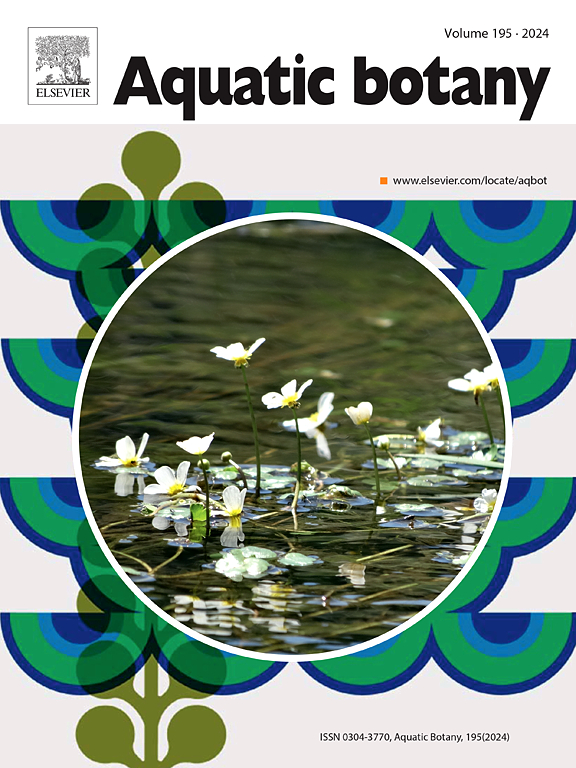Systematic review and meta-analysis of the Enemy Release Hypothesis as applied to aquatic plants
IF 2.6
4区 生物学
Q2 MARINE & FRESHWATER BIOLOGY
引用次数: 0
Abstract
The Enemy Release Hypothesis (ERH) argues that escape from natural enemies allows exotic plants to become invasive in new habitats. This study provides a critical review of this hypothesis in aquatic plant ecosystems using a meta-analytic approach, considering diverse growth forms, multiple performance parameters, and various study methodologies. The key question posed is whether exotic macrophytes in freshwater ecosystems experience decreased enemy pressure compared to native species, and whether this translates to increased performance parameters. We hypothesize that plant growth form influences ERH expression, with the strongest effects in submerged macrophytes, and that ecological complexity obscures enemy release detection in biogeographical and community studies. A search term based on the key question was formulated and yielded 243 studies. Effects from manipulative experiments revealed significant support for the ERH under abiotic stressors such as eutrophication and temperature change, highlighting the dynamic nature of ecological interactions. However, the 53 community level effects showed contrasting findings, suggesting that native species may outperform invasive conspecifics in more stable environments. The evident complexity of ecological factors considered in the studies used here challenges the theoretical expectations of the ERH, demanding further exploration of alternative mechanisms, such as disturbance, biotic resistance, mutualism, and climate suitability.
应用于水生植物的敌人释放假说的系统综述和荟萃分析
“敌人释放假说”(ERH)认为,逃离天敌会使外来植物在新的栖息地变得具有侵略性。本研究在水生植物生态系统中使用元分析方法,考虑到不同的生长形式、多种性能参数和不同的研究方法,对这一假设进行了批判性的回顾。提出的关键问题是,淡水生态系统中的外来大型植物是否比本地物种经历更少的敌人压力,以及这是否转化为更高的性能参数。我们假设植物的生长形式影响ERH的表达,其中对沉水植物的影响最大,而生态复杂性使生物地理学和群落研究中的敌人释放检测变得模糊。根据关键问题制定了一个搜索词,并获得了243项研究。操纵实验结果显示,在富营养化和温度变化等非生物胁迫条件下,ERH得到了显著支持,凸显了生态相互作用的动态性。然而,53个群落水平效应显示出截然不同的结果,表明在更稳定的环境中,本地物种可能优于入侵同种物种。研究中所考虑的生态因素的明显复杂性挑战了ERH的理论预期,需要进一步探索其他机制,如干扰、生物抗性、互惠主义和气候适宜性。
本文章由计算机程序翻译,如有差异,请以英文原文为准。
求助全文
约1分钟内获得全文
求助全文
来源期刊

Aquatic Botany
生物-海洋与淡水生物学
CiteScore
3.80
自引率
5.60%
发文量
70
审稿时长
6 months
期刊介绍:
Aquatic Botany offers a platform for papers relevant to a broad international readership on fundamental and applied aspects of marine and freshwater macroscopic plants in a context of ecology or environmental biology. This includes molecular, biochemical and physiological aspects of macroscopic aquatic plants as well as the classification, structure, function, dynamics and ecological interactions in plant-dominated aquatic communities and ecosystems. It is an outlet for papers dealing with research on the consequences of disturbance and stressors (e.g. environmental fluctuations and climate change, pollution, grazing and pathogens), use and management of aquatic plants (plant production and decomposition, commercial harvest, plant control) and the conservation of aquatic plant communities (breeding, transplantation and restoration). Specialized publications on certain rare taxa or papers on aquatic macroscopic plants from under-represented regions in the world can also find their place, subject to editor evaluation. Studies on fungi or microalgae will remain outside the scope of Aquatic Botany.
 求助内容:
求助内容: 应助结果提醒方式:
应助结果提醒方式:


